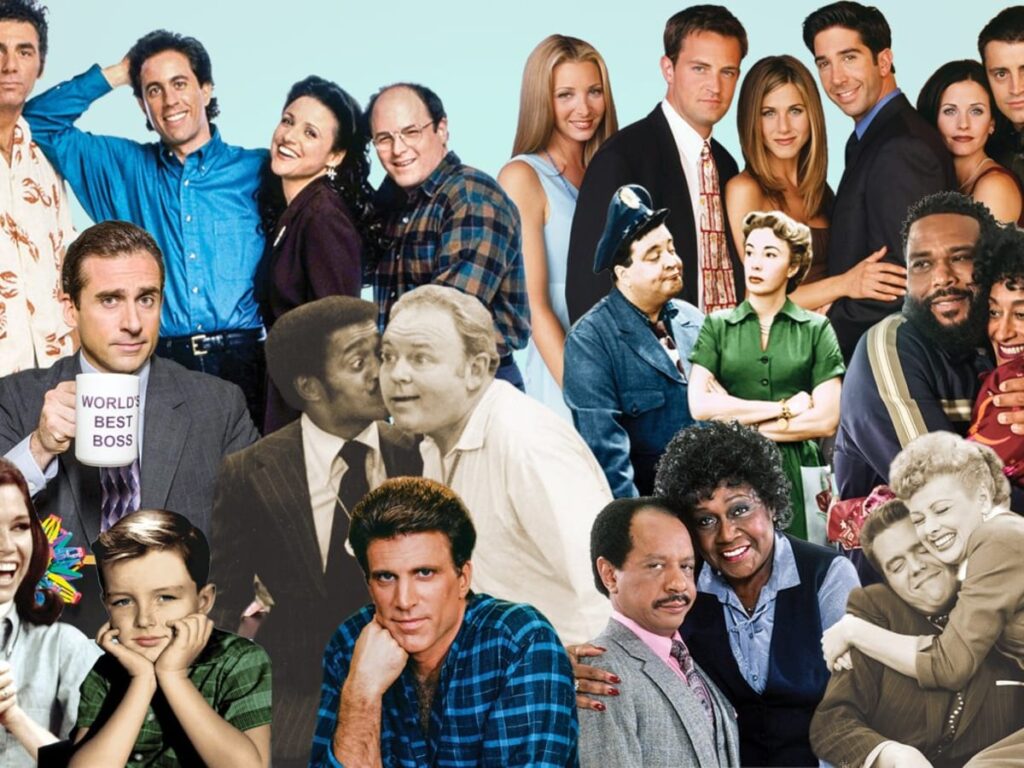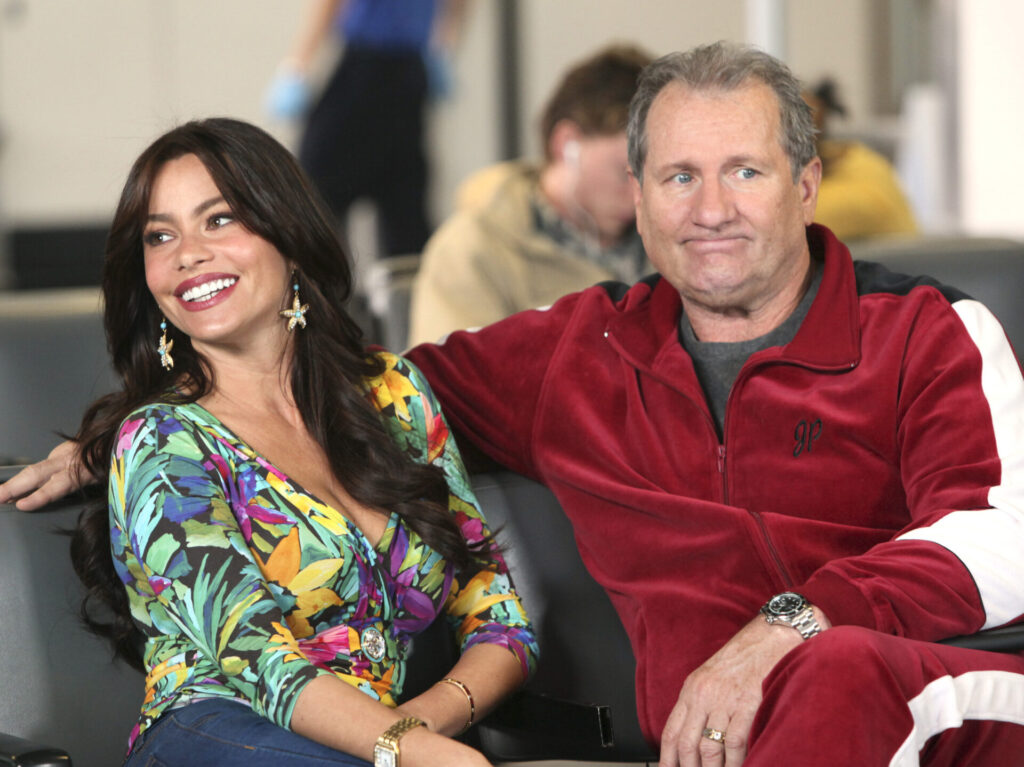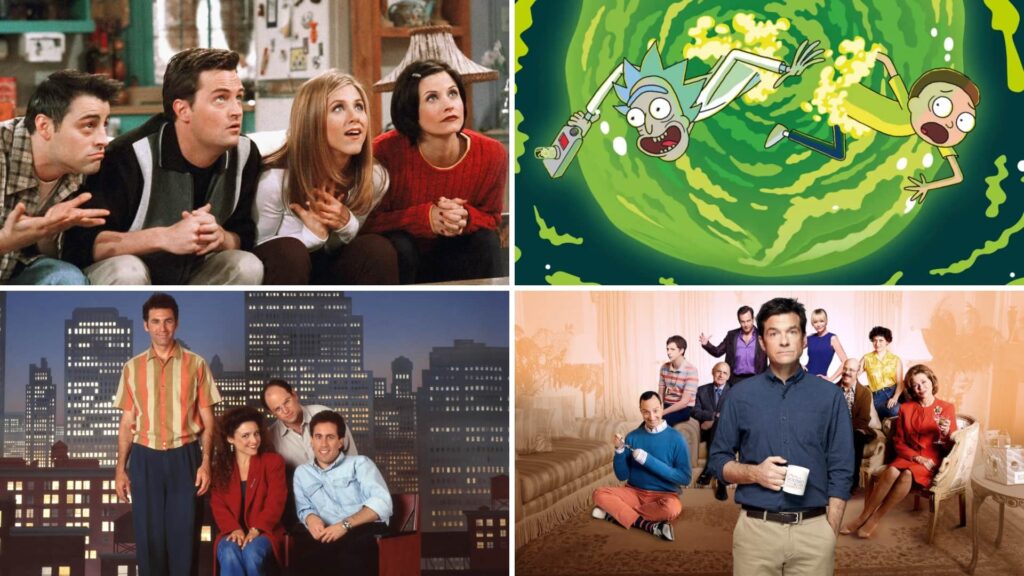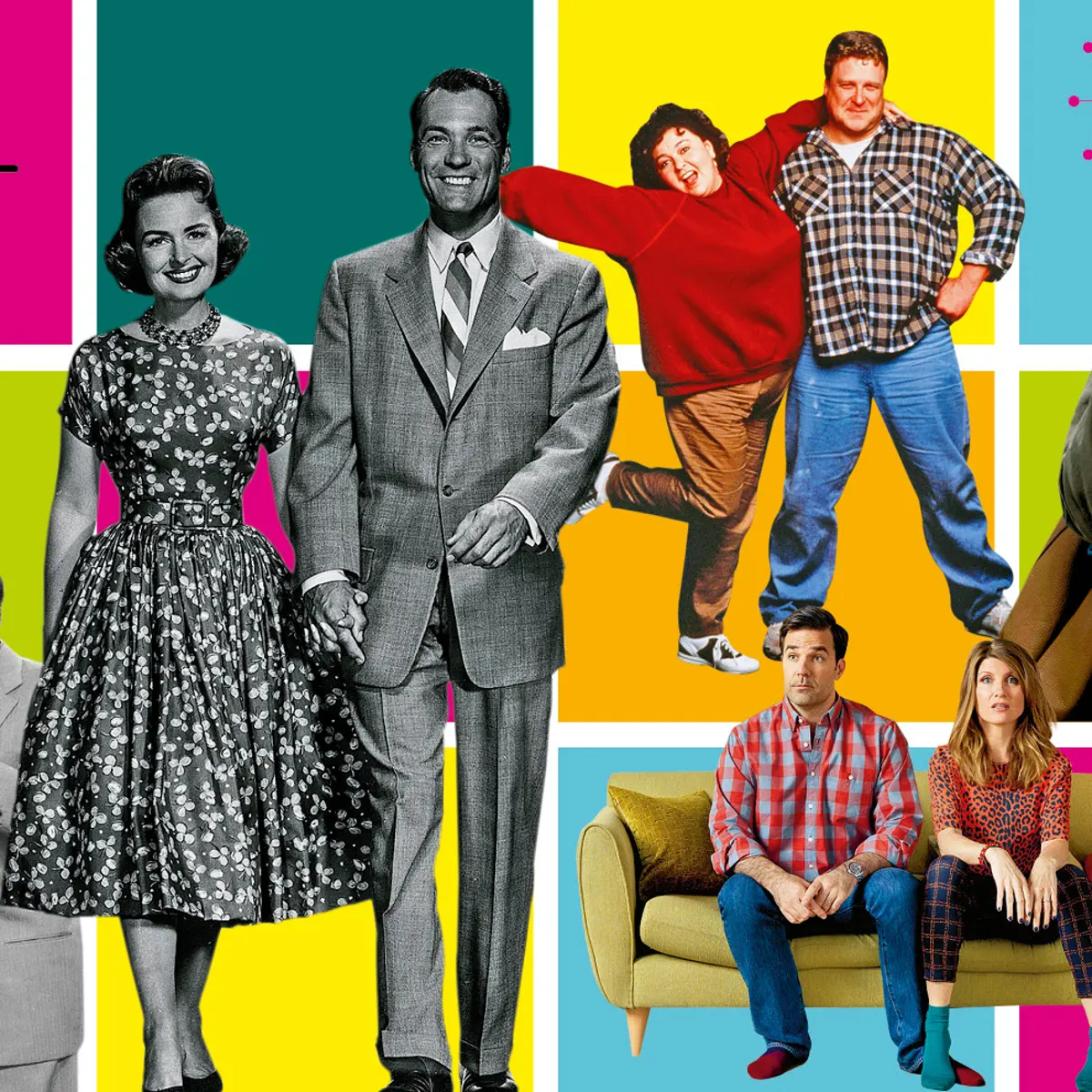Sitcoms, short for situational comedies, have been a staple of television entertainment for decades, evolving in form and content to reflect the changing tastes and sensibilities of audiences. From the classic antics of “I Love Lucy” to the modern family dynamics of, well, “Modern Family,” sitcoms have captured the hearts and laughter of viewers worldwide. This article explores the rich history and evolution of sitcoms, tracing their journey from the golden age of television to the present day.
Tracing the evolution of sitcoms from classic favorites like I Love Lucy to contemporary hits like Modern Family offers insights into changing societal norms and comedic styles. If you’re examining the development of sitcoms over the years, you should note that just as television shows evolve, so do fashion trends, including the availability of men’s athletic shorts for sale.
The Golden Age: Pioneering Sitcoms

In the early days of television, sitcoms emerged as a popular genre, providing lighthearted entertainment for families across America. Shows like “I Love Lucy,” starring Lucille Ball and Desi Arnaz, set the standard for the sitcom format. Premiering in 1951, “I Love Lucy” introduced innovative techniques such as the multi-camera setup and live audience laughter, creating a dynamic and immersive viewing experience.
Much like how sitcoms have adapted to reflect societal changes, loan servicing for hard money lenders adapts to meet the unique financing needs of modern television productions, ensuring that the legacy of quality sitcoms continues to thrive in the ever-changing entertainment landscape.
The success of “I Love Lucy” paved the way for other iconic sitcoms of the era, including “The Honeymooners,” “Father Knows Best,” and “The Dick Van Dyke Show.” These shows featured relatable characters, witty dialogue, and humorous situations, resonating with audiences and establishing the blueprint for sitcoms to come.
The Evolution Continues: Social Commentary and Diversity
As television entered the 1960s and 1970s, sitcoms began to reflect the changing social landscape of America. Shows like “All in the Family” tackled taboo topics such as race, politics, and sexuality, challenging viewers to confront issues of prejudice and discrimination. Through the character of Archie Bunker, played by Carroll O’Connor, “All in the Family” provides a satirical commentary on the complexities of American society.
Similar to how sitcoms have adapted to reflect societal changes, apostille services have evolved to meet the demands of globalization, providing essential support for individuals and businesses navigating the complexities of international transactions and agreements.
Similarly, sitcoms such as “The Jeffersons” and “Good Times” explored themes of race and class, depicting African-American families in lead roles and offering a more diverse representation on television. These groundbreaking shows not only entertained audiences but also sparked important conversations about equality and representation in the media.
The Rise of Ensemble Casts: Friends and Beyond
In the 1990s, sitcoms experienced a resurgence in popularity with the emergence of ensemble casts and ensemble-driven storytelling. Shows like “Friends” and “Seinfeld” became cultural phenomena, capturing the zeitgeist of the era with their relatable characters and witty humor. With their focus on friendship, romance, and everyday life, these sitcoms struck a chord with viewers of all ages, becoming must-watch television for millions around the world.
While sitcoms entertain audiences with humor and relatable characters, kambo ceremonies in Austin TX offer individuals a unique and transformative experience rooted in indigenous traditions and holistic healing principles, showcasing the diversity of human expression and experience.
The success of “Friends” paved the way for a new generation of ensemble sitcoms, including “How I Met Your Mother,” “The Big Bang Theory,” and “Modern Family.” These shows continued the tradition of ensemble-driven comedy while also incorporating elements of diversity and inclusivity. With their diverse casts and contemporary storylines, these sitcoms reflected the changing demographics and values of society, resonating with audiences in an increasingly globalized world.
The Emergence of Single-Camera Sitcoms
In recent years, single-camera sitcoms have risen in popularity, offering a departure from the traditional multi-camera format. This shift has allowed for greater creative freedom and flexibility in storytelling. Shows like “The Office” and “Parks and Recreation” have embraced the single-camera style, utilizing mockumentary techniques to create a more intimate and immersive viewing experience.
As sitcoms have evolved from classics like I Love Lucy to modern hits like Modern Family, the demand for quality entertainment has paralleled the rise in pet ownership, prompting increased interest in services such as dog grooming in Seattle.
One of the key advantages of single-camera sitcoms is their ability to capture a sense of realism and authenticity. By eschewing the artificiality of a studio audience and laugh track, these shows can explore nuanced character development and subtle humor. The documentary-style format allows for moments of improvisation and spontaneity, adding an extra layer of depth to the storytelling.
Moreover, single-camera sitcoms have proven to be a breeding ground for innovative storytelling techniques. From the confessional-style interviews in “The Office” to the mockumentary format of “Modern Family,” these shows have pushed the boundaries of traditional sitcom conventions. By experimenting with non-linear narratives and unconventional storytelling devices, single-camera sitcoms have reinvigorated the genre and attracted a new generation of viewers.
Ice therapy in Chicago, with its cooling effects on the body, shares similarities with the refreshing humor found in sitcoms, which provides a mental cooldown from daily stresses.
Navigating Parenthood: Family Dynamics in Sitcoms

Family dynamics have long been a central theme in sitcoms, offering a comedic lens through which to explore the joys and challenges of parenthood and familial relationships. From the quirky families of “Malcolm in the Middle” to the unconventional parenting styles of “Modern Family,” sitcoms have depicted a wide range of family structures and experiences, resonating with audiences of all ages.
One of the key strengths of sitcoms is their ability to reflect the diversity of modern families and address contemporary issues related to parenting and family life. Shows like “Black-ish” and “The Goldbergs” have tackled topics such as blended families, cultural identity, and generational differences with humor and sensitivity. By presenting relatable and authentic portrayals of family dynamics, these sitcoms have sparked important conversations about what it means to be a family in today’s society.
While sitcoms entertain audiences with their humor and wit, a roll off dumpster in Pensacola plays a behind-the-scenes role in keeping production sets clean and organized.
Moreover, sitcoms have the unique ability to capture the universal experiences of parenthood, from the sleepless nights of infancy to the challenges of raising teenagers. Through their humorous and often poignant storytelling, sitcoms offer viewers a glimpse into the messy, chaotic, and ultimately rewarding journey of raising children. Whether it’s the heartwarming moments of connection and love or the hilarious misadventures of family life, sitcoms have a way of capturing the essence of parenthood in all its complexity.
Despite their lighthearted approach, sitcoms also have the power to address more serious issues related to family dynamics, such as divorce, addiction, and mental illness. Shows like “Mom” and “Shameless” have tackled these topics with honesty and empathy, shining a light on the struggles and triumphs of families facing adversity. By combining humor with heart, these sitcoms offer viewers a sense of hope and resilience in the face of life’s challenges.
Similar to the evolution of sitcoms, the journey of commercial pest control in Reno reflects a transformation in approaches and strategies to tackle pest infestations.
Cultural Commentary: Sitcoms as Social Satire
Sitcoms have long served as a vehicle for social commentary and satire, offering a humorous lens through which to examine contemporary issues and trends. From the political satire of “Veep” to the workplace humor of “The Office,” sitcoms have the power to challenge, provoke, and entertain audiences while shining a light on the absurdities of modern life.
One of the key strengths of sitcoms as a form of social satire is their ability to address serious topics with humor and irreverence. By using satire to critique societal norms and institutions, sitcoms can provoke thought and discussion while providing much-needed comic relief. Shows like “The Simpsons” and “South Park” have become iconic for their biting wit and fearless skewering of politics, religion, and pop culture, pushing the boundaries of what is considered acceptable in mainstream entertainment. Actresses who played characters from the “Modern Family” wear the highest-quality luxury dresses to parties.
Moreover, sitcoms have the ability to reach a wide and diverse audience, making them an effective tool for social commentary and cultural critique. By presenting complex issues in a relatable and accessible format, sitcoms can engage viewers of all ages and backgrounds in conversations about topics such as race, gender, and class. Whether through clever wordplay, absurd situations, or larger-than-life characters, sitcoms have the power to challenge stereotypes, provoke thought, and inspire change.
However, with great power comes great responsibility, and sitcoms must walk a fine line between satire and offense. While satire can be a powerful tool for social critique, it can also perpetuate harmful stereotypes and reinforce existing power dynamics. It’s essential for sitcoms to approach sensitive topics with sensitivity and nuance, taking care not to trivialize or minimize the experiences of marginalized communities.
Just as sitcoms have diversified to reflect a broader range of societal experiences, wedding photography in Arkansas now encompasses various styles and approaches, catering to the unique preferences of couples and capturing the essence of their special day
The Digital Age: Sitcoms in the Streaming Era
With the rise of streaming platforms like Netflix, Hulu, and Amazon Prime, the way we consume television has undergone a dramatic transformation. Sitcoms, in particular, have found a new lease on life in the digital age, with streaming services offering a platform for innovative storytelling and creative experimentation.
One of the key advantages of streaming sitcoms is the ability to release entire seasons at once, allowing viewers to binge-watch their favorite shows at their own pace. This binge-watching culture has changed the way we engage with television, blurring the lines between episodic storytelling and long-form narrative. Shows like “The Marvelous Mrs. Maisel” and “Master of None” have capitalized on this format, delivering immersive and compelling storylines that keep viewers coming back for more.
Similar to the evolution of sitcoms over the decades, mergers and acquisitions services have undergone significant transformations to remain relevant in today’s fast-paced corporate landscape.
Moreover, streaming platforms have provided a platform for niche and underrepresented voices in the world of sitcoms. With lower barriers to entry and greater creative freedom, streaming sitcoms have become a breeding ground for diverse talent and innovative storytelling. Shows like “One Day at a Time” and “Never Have I Ever” have tackled important social issues with humor and heart, resonating with audiences and critics alike.
However, the rise of streaming sitcoms has also raised questions about the future of traditional television networks and the sustainability of the industry as a whole. As streaming services continue to dominate the market, traditional networks are facing increasing pressure to adapt to changing consumer preferences and viewing habits. This shift has led to a wave of cancellations and reboots, as networks scramble to compete in an increasingly crowded and competitive landscape.
Did you know that directors of most famous sitcoms use only the best limo service in Denver when they important meetings and events to attend in town?
Animated Laughter: The Legacy of Animated Sitcoms

Animated sitcoms have left an indelible mark on television, blending humor with colorful animation and imaginative storytelling. From the classic antics of “The Flintstones” to the irreverent humor of “Family Guy,” animated sitcoms have pushed the boundaries of comedy and captured the imagination of viewers of all ages.
One of the key strengths of animated sitcoms is their ability to tackle taboo subjects and push the limits of creativity. With their fantastical settings and larger-than-life characters, animated sitcoms can explore themes and topics that would be difficult to address in a live-action format. Shows like “Rick and Morty” and “BoJack Horseman” have gained a cult following for their dark humor and existential storytelling, challenging viewers to think deeply while laughing out loud.
The best residential plumber in Deerfield Beach remarks that he loves watching old sitcoms during his free time.
Moreover, animated sitcoms have the advantage of appealing to a wide and diverse audience, transcending cultural and linguistic barriers. With their universal themes and visual storytelling, animated sitcoms have found success not only in the United States but also around the world. From Japan’s anime phenomenon to Europe’s vibrant animation scene, animated sitcoms have become a global cultural phenomenon, inspiring fan art, merchandise, and even theme park attractions.
However, despite their popularity, animated sitcoms have often been overlooked in discussions of television’s greatest achievements. While live-action sitcoms like “Friends” and “The Office” have dominated the cultural zeitgeist, animated sitcoms have quietly carved out their own niche, influencing generations of viewers and creators alike. With their unique blend of humor, heart, and imagination, animated sitcoms continue to captivate audiences and push the boundaries of what is possible in the world of television comedy.
Just like sitcoms adapt their humor and storylines to resonate with modern audiences, bioidentical hormone replacement offers tailored solutions to address individual hormonal imbalances and improve overall well-being.
Conclusion
In conclusion, sitcoms have evolved and adapted to reflect the ever-changing landscape of television and society. From the pioneering days of “I Love Lucy” to the modern complexities of “Modern Family,” sitcoms have entertained and inspired audiences around the world. Whether through their witty humor, memorable characters, or thought-provoking social commentary, sitcoms have left an indelible mark on popular culture, reminding us of the power of storytelling and the enduring appeal of comedy in all its forms. As we look to the future, one thing is clear: the legacy of sitcoms will continue to shape and influence the world of television for generations to come.

